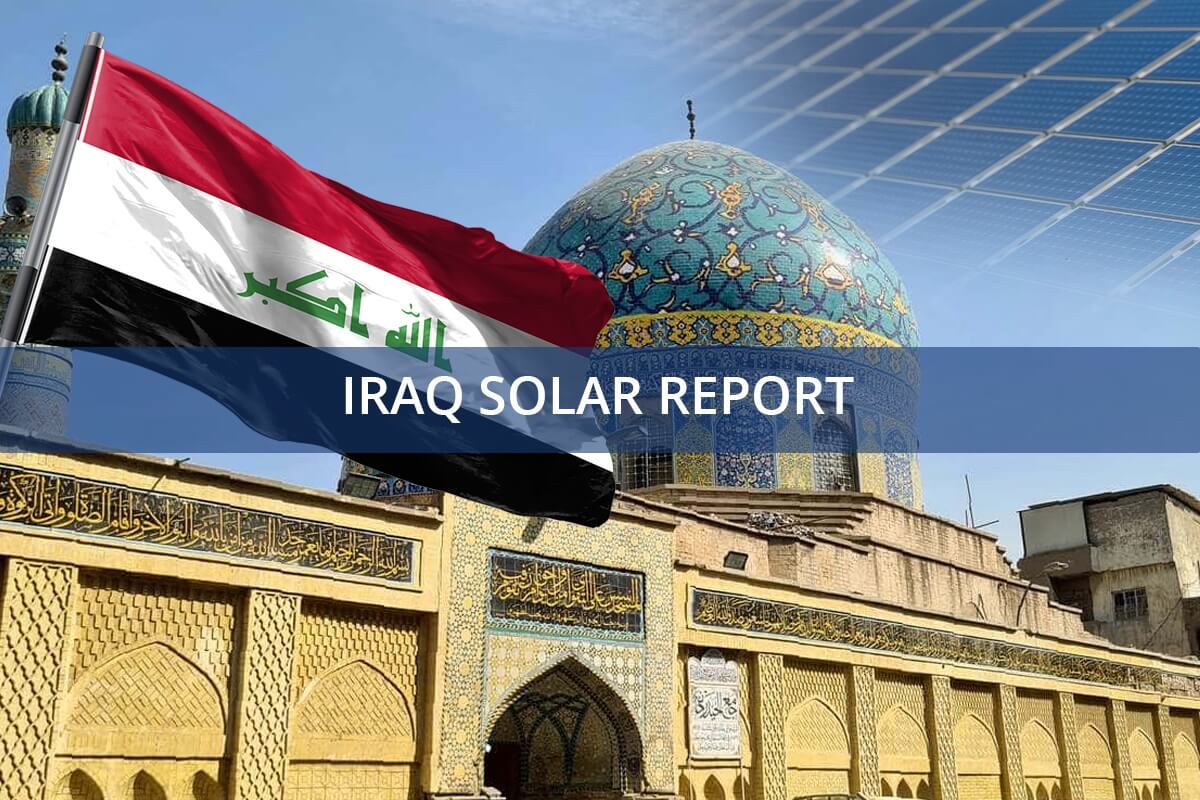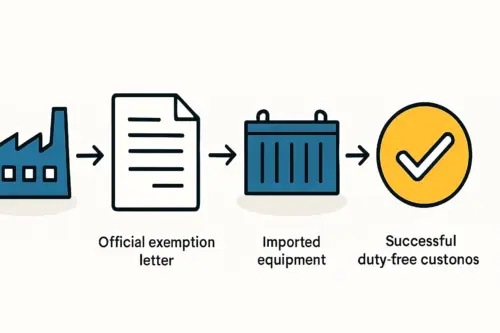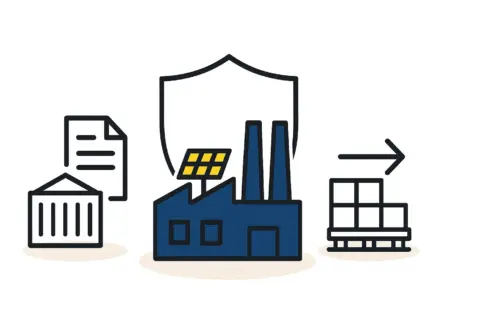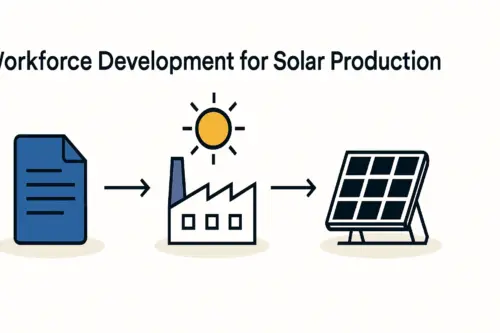An entrepreneur planning to build a solar module assembly line often focuses on high-value components like photovoltaic cells, specialized solar glass, and encapsulant films. It’s often assumed that these components, along with all supporting materials, must be imported. This perspective, however, overlooks a significant strategic opportunity within Iraq’s local industrial landscape.
Relying entirely on international suppliers creates vulnerabilities. Shipping delays, customs issues, and currency fluctuations can introduce unforeseen costs and disrupt production. The most resilient solar manufacturers strategically cultivate a local supply chain for ancillary materials, turning a potential weakness into a competitive advantage.
The Strategic Importance of a Local Supply Chain
Developing local sources for non-core components isn’t just a cost-saving measure—it’s a fundamental business strategy. For an investor in Iraq, the benefits span operations, finance, and market positioning.
According to recent industrial analyses, Iraq has a nascent but growing industrial base, particularly in sectors such as aluminum extrusion, plastic molding, and metal fabrication. While not yet tailored for the high-precision demands of the photovoltaic industry, this existing capacity provides a solid foundation. The challenge, and opportunity, is not a lack of industrial machinery, but a gap in the specialized knowledge required to meet international quality standards for solar components.
By cultivating local suppliers, a new solar enterprise can achieve:
-
Reduced Logistical Complexity: Sourcing bulky items like aluminum frames and packaging materials locally eliminates steep shipping costs and cuts lead times from months to weeks.
-
Improved Cash Flow: Lower inventory requirements for locally sourced goods mean less capital is tied up in transit or in a warehouse.
-
Supply Chain Resilience: A diversified supplier base with local options mitigates the risk of disruptions from global events, port congestion, or shifts in trade policy.
-
Enhanced National Value: Building a local ecosystem demonstrates a commitment to the national economy, a factor that can be advantageous when pursuing government tenders and institutional partnerships.
Identifying Ancillary Materials for Local Sourcing
While core components like solar cells will likely remain imports in the initial phase, several ancillary materials are prime candidates for local sourcing. A pragmatic approach is to categorize potential components by their manufacturing complexity.
Ready to make big Profits?
The solar Industry is Booming
WE HELP NEWCOMERS to the solar industry start their own solar module production line. Customers can make BIG PROFITS by selling modules and finding investors, without wasting money and time on things they don't need!
High-Potential Candidates for Localization
These materials require standard industrial processes that are often already in place within Iraq’s manufacturing sector.
-
Aluminum Frames: The protective aluminum frame is one of the most viable components to source locally. The key is to find an aluminum extrusion company capable of meeting precise dimensional tolerances and providing the high-quality anodization required for long-term weather resistance. Vetting a potential supplier involves a rigorous audit of their die-cutting precision and anodization quality control.
-
Packaging Materials: This is the most straightforward category. Sourcing cardboard boxes, wooden pallets, corner protectors, and strapping materials locally is an immediate way to cut costs and simplify logistics.
-
Cables and Connectors: A local wire and cable industry, if one exists, can be a source for junction box cables. The critical factor is ensuring the copper quality and insulation material (typically XLPE) meet stringent IEC (International Electrotechnical Commission) standards for UV resistance and high-voltage applications.
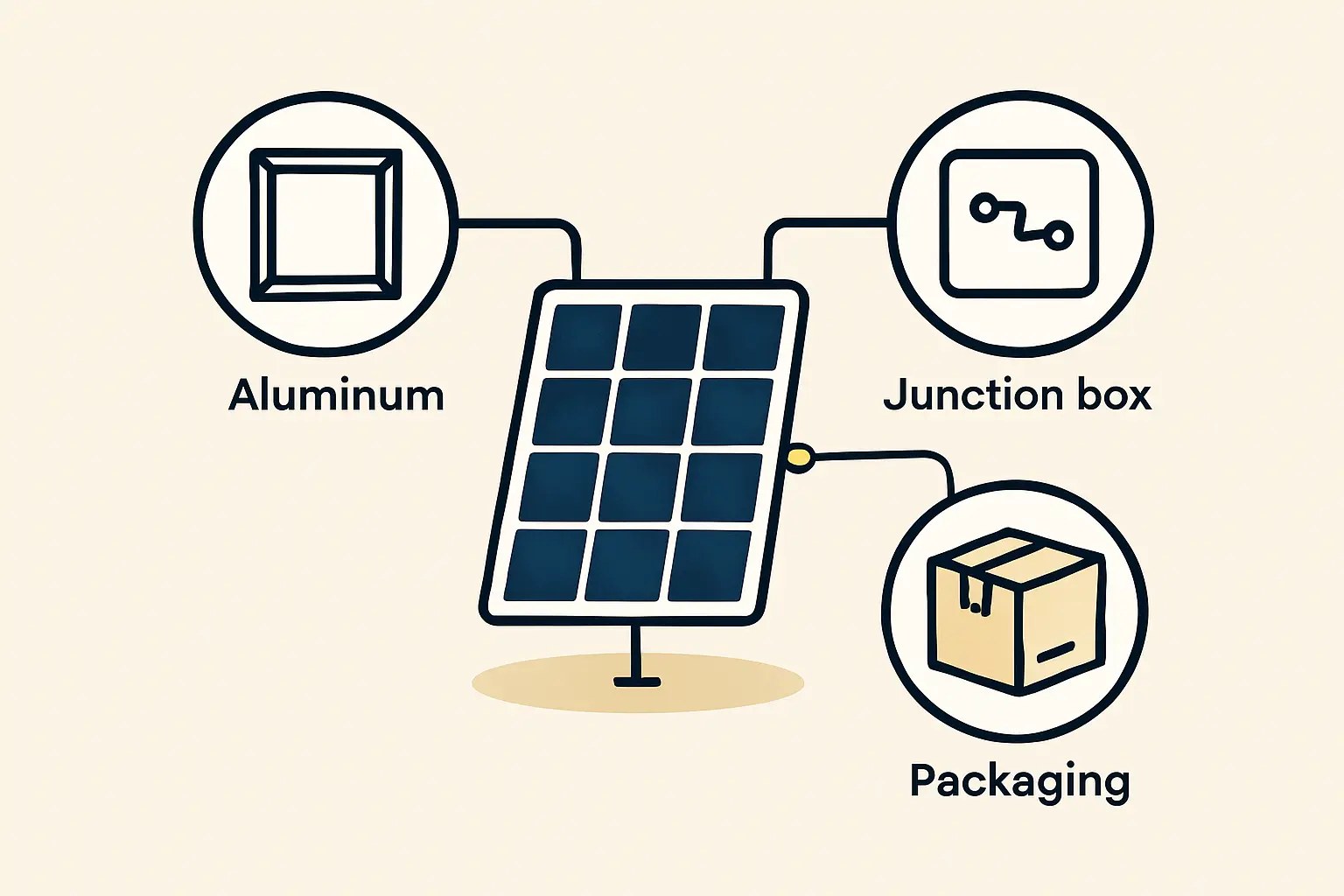
Medium-Potential Candidates
These components require more specialized processes but could be developed with a local partner through technology transfer.
-
Junction Boxes: A local plastic injection molding facility could produce the plastic housing for the junction box. However, the diodes and connectors within the box are specialized electronic components that would still need to be imported. A hybrid approach—importing the electronics and assembling them into a locally made housing—can be an effective intermediate step. A deeper understanding of this component’s function is available in our guide on the role of a solar junction box.
-
Labels and Adhesives: The rating labels and warning stickers on the back of a module are simple to produce locally, provided the materials used can withstand decades of exposure to UV light and extreme temperatures without fading or peeling.
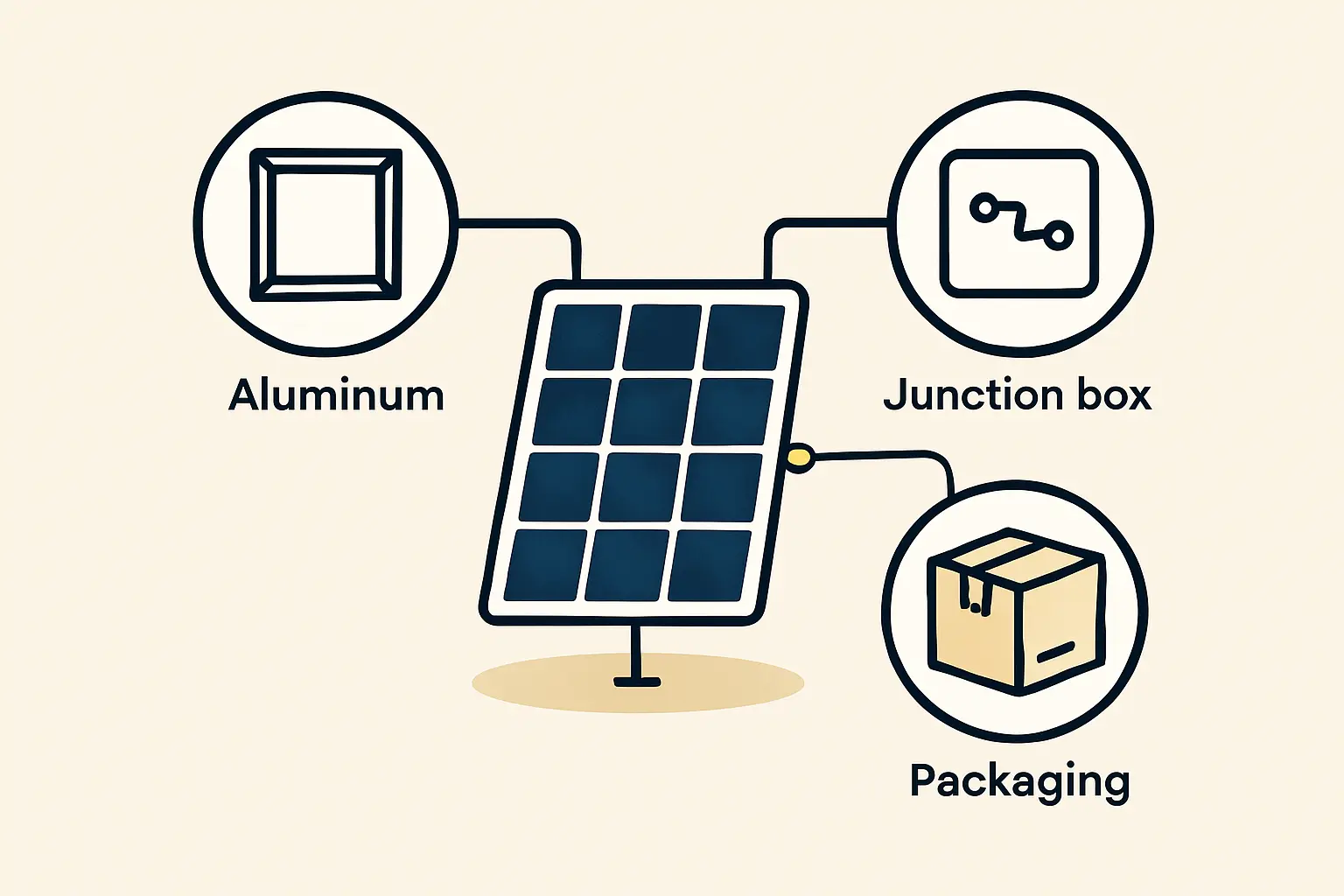
Long-Term Candidates
These materials involve complex chemical engineering and are unlikely to be sourced locally in the short term.
-
Encapsulants (EVA/POE): Ethylene Vinyl Acetate and Polyolefin Elastomer films are highly specialized polymers that require significant chemical industry infrastructure.
-
Backsheets: This multi-layered polymer laminate serves as the module’s primary moisture barrier and electrical insulator, demanding advanced manufacturing processes.

A Framework for Vetting Local Iraqi Suppliers
Turning a local manufacturer into a qualified photovoltaic component provider requires a structured process. Based on experience from J.v.G. turnkey projects, the focus must be on bridging the gap in quality and knowledge.
Step 1: Identify Adjacent Industries
Begin by researching companies in related fields. An aluminum window frame manufacturer has the core equipment for solar frames. A company producing industrial plastic casings has the potential to make junction box housings.
Step 2: Conduct a Technical Audit
This is the most critical phase. An expert must assess the supplier’s existing machinery, processes, and—most importantly—their quality control culture. Key questions include:
- Do they have modern measurement tools (e.g., calipers, micrometers)?
- Is there a documented quality assurance process?
- Are they willing to invest in new dies or molds to meet exact specifications?
Step 3: The Sample and Test Protocol
Never commit to a large order without a rigorous sampling process.
- Provide the exact technical drawings and material specifications.
- Request a small batch of prototype samples.
- Subject these samples to in-house testing (e.g., dimensional checks, material analysis, stress tests). For example, an aluminum frame sample might be tested for its corner key strength and anodization layer thickness.
Step 4: Evaluate Scalability and Consistency
Once quality is confirmed, assess the supplier’s ability to deliver consistently at scale. Can they produce 5,000 frames per month with the same precision as the first five samples? This involves reviewing their raw material sourcing, production planning, and workforce capacity.
Frequently Asked Questions (FAQ)
What are “ancillary materials” in solar module assembly?
Ancillary materials, or Balance of System (BOS) components, are all the parts of a solar module other than the solar cells themselves. This includes the glass, frame, backsheet, encapsulants, junction box, cables, and connectors.
Can a new solar factory in Iraq source everything locally?
No, this is unrealistic for a new venture. Core-technology items like photovoltaic cells, solar-grade glass, and specialized polymer films (EVA, backsheets) will almost certainly need to be imported initially. The goal is to strategically localize ancillary materials to build resilience and reduce costs.
How much can local sourcing realistically reduce the final module cost?
While this varies, sourcing bulky items like aluminum frames and packaging locally can reduce the total material cost of a module by 5–10%. More importantly, it significantly lowers shipping costs and reduces the capital tied up in inventory.
What is the single biggest risk when using new local suppliers?
The primary risk is inconsistent quality. A local supplier may produce excellent samples but struggle to maintain those standards across a large production run. This is why establishing a robust incoming quality control (IQC) department at your own factory is non-negotiable.
Is a technical expert necessary to vet these local suppliers?
For an entrepreneur without a background in photovoltaic engineering, engaging a technical consultant is strongly recommended. An expert can quickly assess a potential supplier’s true capabilities, identify quality gaps, and define the necessary steps to bring their production up to the required international standards, saving significant time and preventing costly mistakes.
Conclusion: Building a Foundation for Long-Term Success
For entrepreneurs entering the solar manufacturing space in Iraq, looking inward at local industrial capacity is a strategically smart move. While importing core components is a necessity, building a local supply chain for ancillary materials lays the groundwork for a more robust, cost-effective, and resilient operation.
The process requires diligence, technical oversight, and a commitment to supplier development. But the rewards—reduced costs, operational agility, and a strengthened local economy—provide a powerful competitive edge.
To understand how these components fit into the complete manufacturing picture, exploring the broader topic of supply chain management in solar manufacturing will provide a comprehensive overview of all required inputs for your factory.

